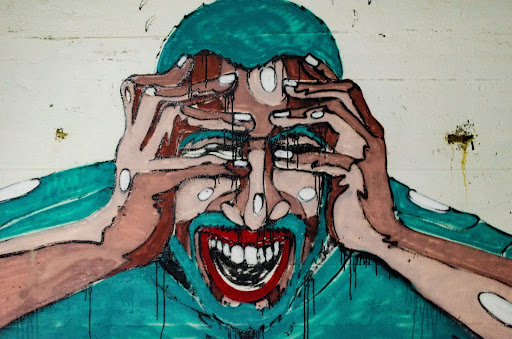
Photo by Aarón Blanco Tejedor on Unsplash.
Why do I hurt?
When it comes to pain, how an injury was sustained provides valuable information as to what may be going on. In the case of a car accident or sports injury, the cause is more easily identifiable and gives clinicians insight to what tissues may be involved.
When a clear reason for one’s pain is not available, it leaves patients speculating as to why they hurt. “I slept wrong,” “I have a bad back,” “My old injury is acting up again,” “I just bent over to pick up a pencil” are common explanations we hear.
The truth is that pain is complex and multifactorial; we may not be able to identify a specific reason or incidence as the cause. Stress, sleep, nutrition, and preparedness for an activity or movement play a role in our susceptibility to pain/injury.
What about my old injury?
We often hear from patients that they believe their old sports injury or car accident 2, 5, or 10+ years ago is the reason for their pain. While these events are certainly important to consider, the body is incredibly resilient and an injury from the past may not be the cause of one’s current pain.

Photo from Pexels.
Normal tissue healing typically takes anywhere from days to months to occur. Even in an extreme example of tissue damage, like the case of a broken bone, the body is able to remodel this tissue in a matter of months. Pain can last for years without a good anatomic reason.
Pain can be learned
But while the tissue may no longer be pathologic (damaged), there can be lingering effects on the nervous system. “Pain can be learned in the nervous system so that it is maintained independent of injury, pathology, expectations, or dysfunction” (1).
The body has a strong sense of self-preservation which is largely to our benefit, and sometimes to our detriment. For example, limping after rolling an ankle can be protective until it heals. However, if that limp persists after the ankle heals, it’s no longer advantageous.
The same can be said for pain. It serves as an alarm system and can be protective after acute injuries, to prevent us from doing too much or making things worse. In cases of chronic pain (>2 months), this protective response simply goes too far. A process of “central sensitization” takes place in which less stimulus is required to cause pain. The nervous system essentially remains on high alert, making benign movements and activities painful.
“The hurt you feel becomes the feeling you hurt.” (1)
It may be more accurate to instead talk in terms of sensitivity rather than tissue damage. Bending forward for patients with low back pain is often an aggravating movement. Although forward bending isn’t inherently harmful, the body just has a higher sensitivity (i.e. pain response) to flexion movements.
Factors that keep pain around:
- Fear
- Catastrophizing – assuming the worst about an injury or pain.
- Fragility mindset – the idea that the body is fragile and needs to be protected. The opposite is actually true: the body is strong and adaptable. By moving and exercising, we can increase its capacity to handle stressors.
- Sedentary behavior – Rest is rust. Movement is medicine. We need movement and challenging activities to strengthen our body.

Photo by Andrea Piacquadio from Pexels.
What can I do?
There is a persistent misconception that we should wait until we are out of pain before returning to physical activity. Unfortunately, this is almost universally bad advice. By employing this strategy, we become more untrained, further compromising our ability to handle stressors in our life.
Through a process of gradually exposing the body to aggravating movements, we can decrease sensitivity and rewire the nervous system giving it the “all clear” signal. Once painful movements can again become non painful.
There may be other pathologic explanations for unremitting pain. That’s why as manual therapists we do a thorough evaluation of patients to rule out any potential red flags. If you’re experiencing stubborn pain, reach out so that we can assist you in getting back to living your best life.
References
- Liebenson, C. (2019). Rehabilitation of the Spine: A Patient-Centered Approach (3rd ed.). LWW.
- Kolski, M. C., & O’Connor, A. (2015). A World of Hurt: A Guide to Classifying Pain (1st ed.). Thomas Land Publishers, Inc.
Share this Post
